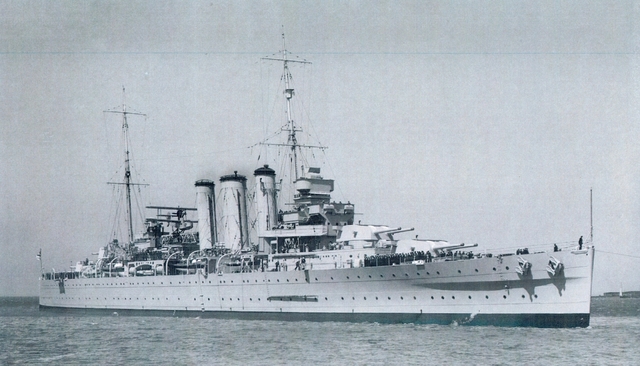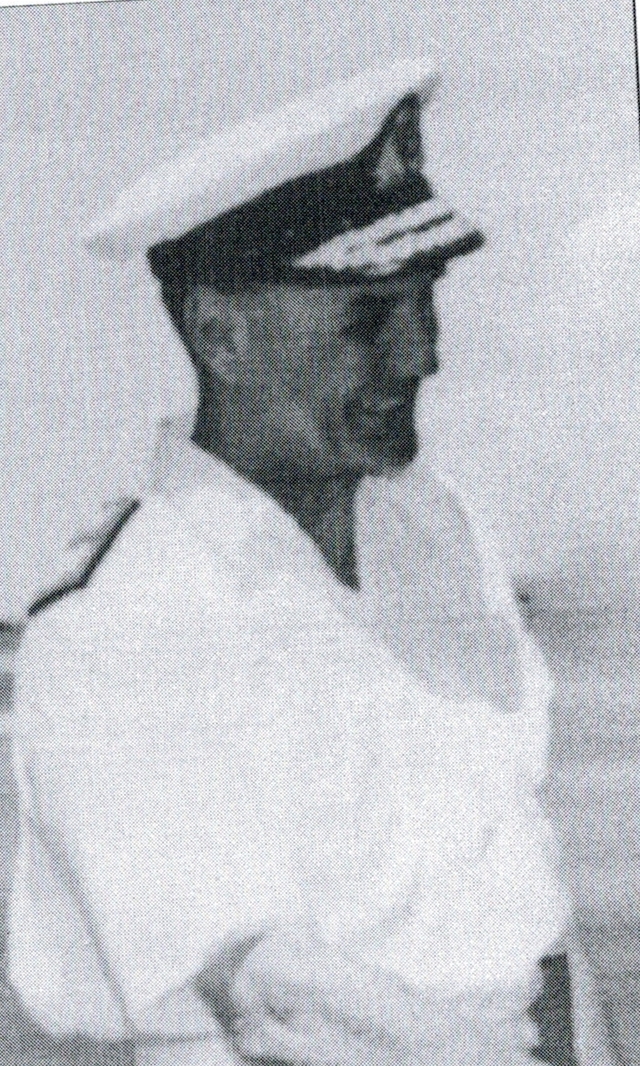The third hero of the Clark family from Talgai, was Charles Carr Clark, the seventh child of George and Gertrude Carr Clark. He also was born at Talgai homestead on 21 August 1902. He grew up on the farm and was educated as a boarding student at the Toowoomba public school until 1916, before applying to enter the Australian Naval College at Jervis Bay, where he had an average scholastic record, but excelled on the cricket field.
After graduating in 1919, Charles was faced with the downgrading of the armed forces as demobilisation was taking place but he was keen on staying in the Navy as a career instead of a discharge. Now engaged in full-time naval service Charles was posted overseas and in 1920, sailed on HMAS “Renown” for England.
For three years, Charles studied Engineering at the Royal Navy College at Davenport, from 1923 to 1924. He also played cricket in their First X1 and was later awarded a place on the advanced engineering course at Greenwich.
Charles returned home to Australia in 1926 and did sea duty until 1928. On 12 December, he was married to Margaret Hayman at St. Andrew’s Anglican Church at Indooroopilly in Brisbane. From November 1929 to June 1932, he was appointed Second Assistant to the Engineering Manager at Garden Island, Sydney. On 31 December Charles went back to sea and while Flotilla Engineering Officer on HMAS “Stuart”, he was promoted to Engineering Commander.
In January 1938, Charles went back to Garden Island and as the First Assistant was involved in major refits to the heavy cruisers “Australia” and “Adelaide”, and was responsible for overseeing of Flotilla for service in the Mediterranean. Then on 31 May, with war against Japan now in full flight, it came to Australia.
On the night of 31 May 1942, Sydney Harbour was attacked by three midget submarines of the Imperial Japanese Navy. An accommodation vessel of the RAN, the HMAS “Kuttabul”, was torpedoed, and 21 sailors died. The midget submarines were hunted down and two were destroyed. The third was found by social divers years later and declared a War Grave by the Australian government. Charles Clark was on the recovery team and worked tirelessly and courageously on the sunken vessel, wading through deep water in dark and hazardous conditions to assist survivors.
In October 1943, Charles was posted to HMAS “Australia”, a heavy cruiser, as the engineering officer, and was sent as part of Task Group 77 to the Pacific area. Here, they encountered Japanese aircraft approaching the Fleet and the next day they came under attack from Japanese Kamikaze aircraft. It was in this campaign that Charles showed extreme courage to take control in the battle of Leyte Gulf. when doing landings, the “Australia” was heavily damaged by the Kamikaze when the ship was hit in the bridge area causing casualties and fire and Charles quickly leapt into action. His deeds led to his award of Order of the British Empire (OBE).
Between 6-9 January 1945 at Lingayan Gulf, Luzon Island, Philippines. Charles was also awarded the Distinguished Service Cross (DSC) as his ship survived 5 Kamikaze Attacks in this battle. This is how his actions were described.
“Charles Clark left his action station in the forward engine room to direct fire and damage control parties, in the ship’s bridge area. He showed gallantry and skill in operations in the Lingayen Gulf”
After the war Charles remained in the Navy and on 31 December 1946, he was promoted as Engineering Captain and appointed General Manager of HMA Naval dockyard at Williamstown, Melbourne. In 1950-1952 he was posted to the Australian High Commission staff in London. In 1953 he was promoted to Engineer Rear- Admiral and appointed third Naval member of the Naval Board and chief of construction. In 1958 was awarded the CB and retired on 2 January 1959, after a period as Director of Broken Hill Propriety Ltd.
Rear-Admiral Charles Carr Clark was possibly the highest military rank to come from the Warwick area, and it could be argued that he was not the greatest. His courage under fire in the Leyte Gulf area and as a survivor of the deadly Japanese suicide bombers was a testament to the Anzac spirit of commitment, courage, sacrifice and mateship. This was demonstrated at the HMAS “Kuttabul” incident in Sydney Harbour in 1942. His older brothers warriors Mortimer, John and Daniel would be very proud of him. Charles was dedicated to Naval excellence throughout his life but sadly, developed Lymphosarcoma and died at Richmond, Melbourne.
On 29 January 1965, after a full Naval funeral, he was cremated, but he will go down in Australian naval history as one of the finest heroes of World War II.








